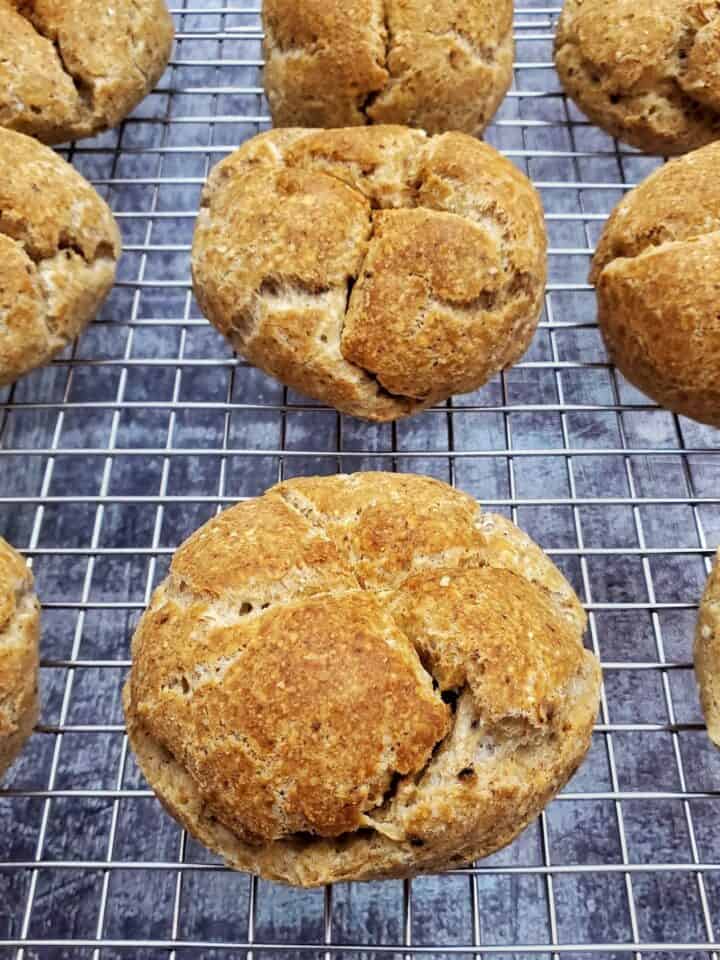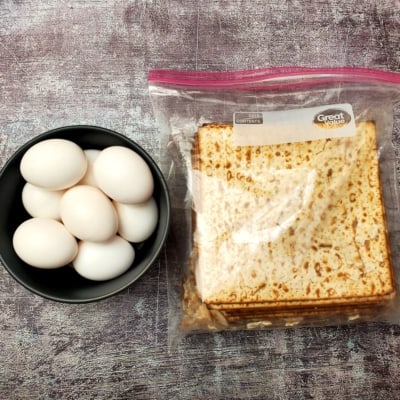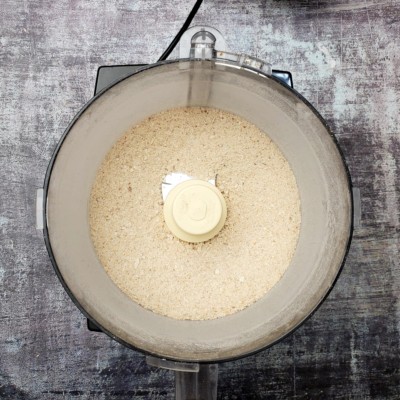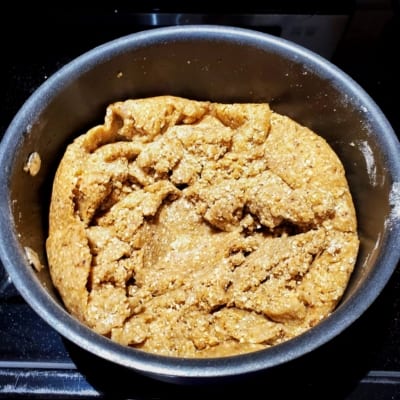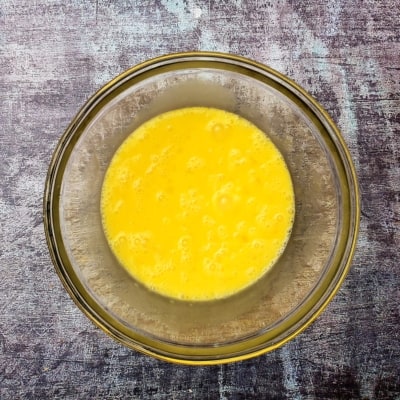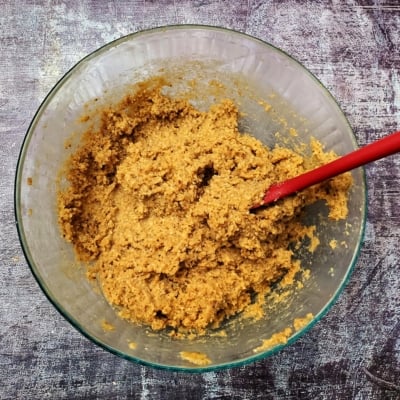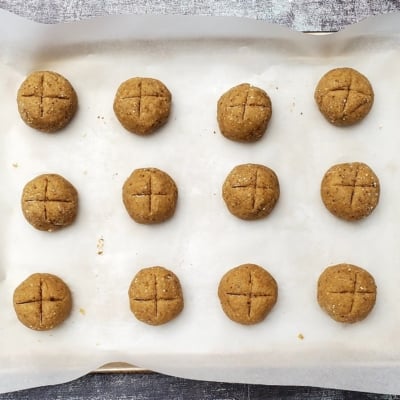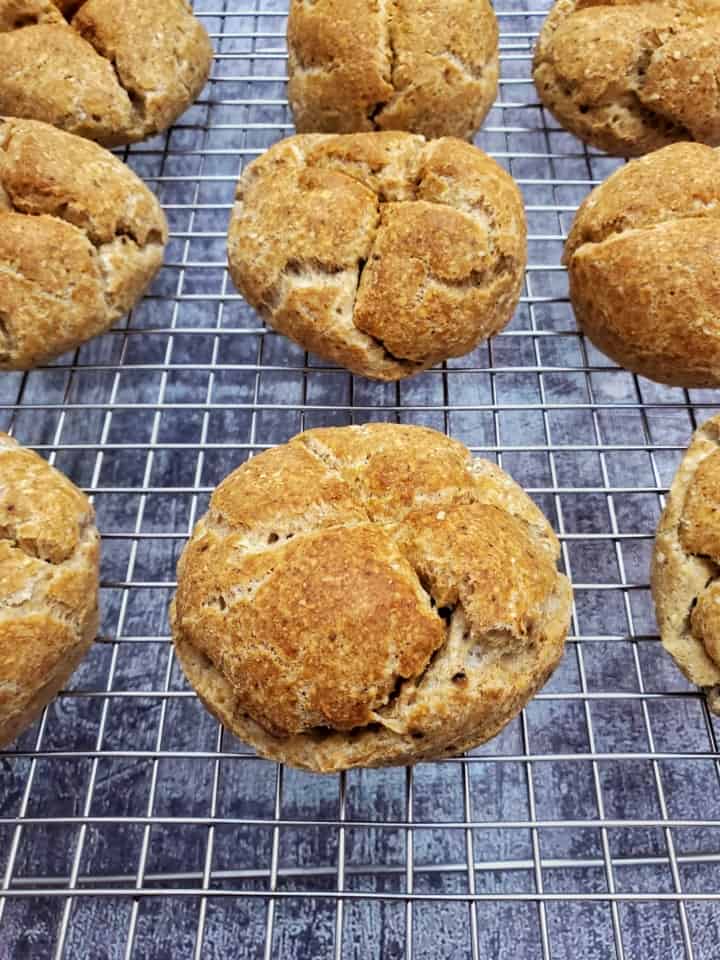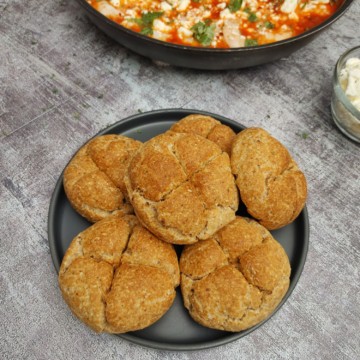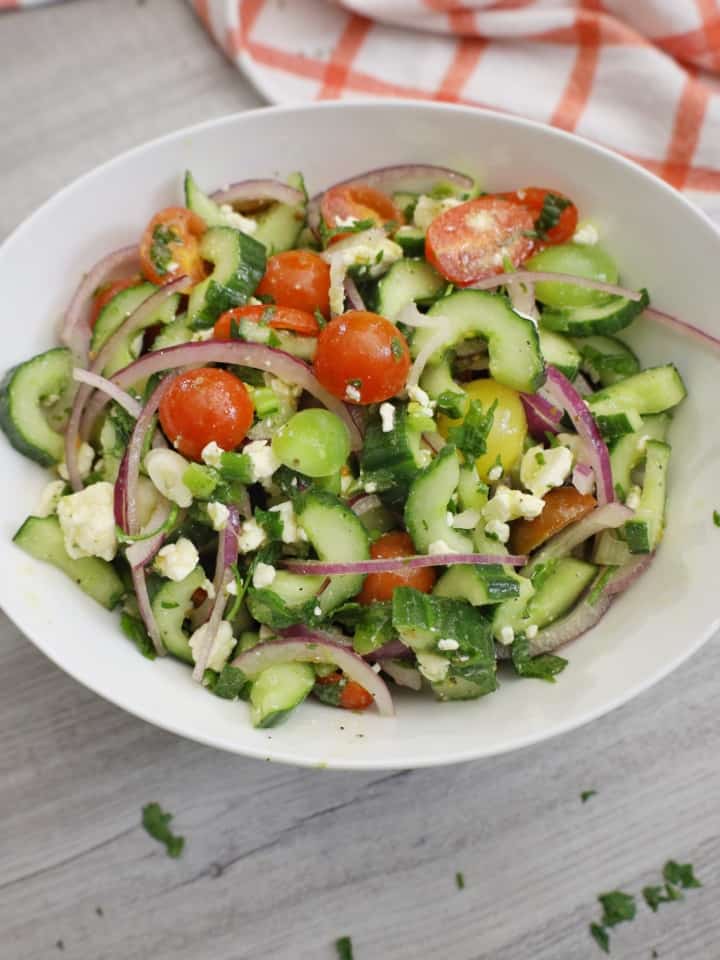Passover Bread, also known as Unleavened bread, is a type of bread made without yeast.
It's traditionally eaten during the Passover holiday, so you can make it; Here's an easy recipe that can be made with either Matzo Meal or Matzo Crackers, although you may need to grind the crackers finely.
While it is delicious on its own, its flavor can be boosted when topped with butter or cream cheese. It could also be used as sandwich bread.
How to Make Passover Bread
Note: The full instructions are provided in the recipe card below.
Preheat the oven to 400°F and line (2) 13x18-inch baking sheets with parchment paper; set aside. If using Matzo Crackers, break them up, place them into a food processor (or blender), and pulse matzo until finely ground; you'll likely need 2 boxes, but you won't use them all.
In a medium nonstick pot, boil the water, oil, salt, and sugar. Reduce the heat to low and add the matzo meal; stir with a wooden spoon until evenly combined and pull away from the sides of the pot;
the mixture will be very thick. Transfer the mixture to a large bowl and set it aside to cool for about 10 minutes.
Add the beaten eggs, a little at a time, stirring well with a wooden spoon after each addition, until evenly combined.
Use a large ice cream scoop or two spoons to drop the batter into mounds, about 2 inches apart, onto the prepared baking sheets.
With lightly oiled or wet hands, gently shape the dough into rolls. Sprinkle matzo meal over each roll and score the top with a sharp knife.
Bake the Passover bread for 20 minutes, reduce the heat to 400 degrees, and bake for 30 to 40 minutes until puffed, crisp, and golden.
Transfer to a wire rack to cool; it is normal for the Passover bread to deflate slightly as it cools.
Related Recipes:
Recipe
Easy Passover Bread
Ingredients
- 350 g (3 cups) matzo meal
- 8 large eggs, beaten , at room temperature
- 1 cup vegetable oil
- 2 cups water
- 1-¾ teaspoons kosher salt
- 1-½ tablespoons granulated sugar
Instructions
- Preheat the oven to 400°F and line (2) 13x18-inch baking sheets with parchment paper; set aside. If using Matzo Crackers, break them up and place them into a food processor (or blender), and pulse matzo until finely ground; you'll likely need 2 boxes, but you won't use them all.
- In a medium nonstick pot, combine the water, oil, salt, and sugar and bring to a boil. Reduce the heat to low and add the matzo meal; stir with a wooden spoon until evenly combined and pull away from the sides of the pot; the mixture will be very thick. Transfer the mixture to a large bowl and set it aside to cool for about 10 minutes.
- Add the beaten eggs, a little at a time, stirring well with a wooden spoon after each addition, until evenly combined. Use a large ice cream scoop or two spoons to drop the batter into mounds, about 2 inches apart, onto the prepared baking sheets. With lightly oiled or wet hands, gently shape the dough into rolls. Sprinkle matzo meal over each roll and score the top with a sharp knife.
- Bake for 20 minutes, reduce the heat to 400 degrees and bake for 30 to 40 minutes longer until puffed, crisp, and golden. Transfer to a wire rack to cool; it is normal for the Passover rolls to deflate slightly as they cool.
Notes
All nutritional information is based on third-party calculations and is only an estimate. Each recipe and nutritional value will vary depending on the brands you use, measuring methods, and portion sizes per household.

